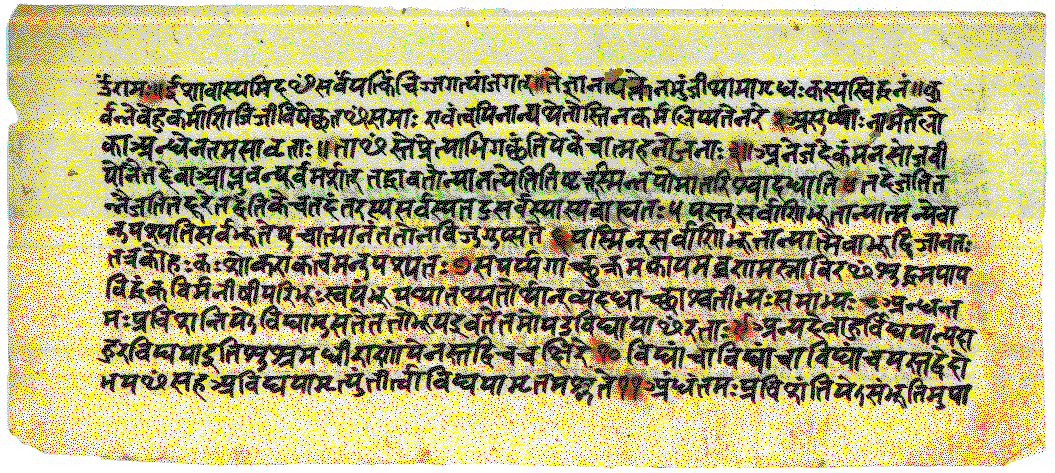TAT TVAM ASI: YOU ARE THAT!
Are YOU limited by space and time?
Do YOU fall within the parameters of space and time?
As a name and form “entity” called Satinder, I am very much within the parameters of time and space and therefore limited by them.
However, in my real nature, true svarupa—as the unchanging Witnessing-Consciousness—I am not at all conditioned by time and space:
Simply put, time and space are mere objects/appearances to ME. I, as the Witnessing-Consciousness, am the Subject; time and space, as witnessed, are the objects to me.
When I, the Subject, exists, they exist; when they cease to exist (as in deep sleep), I still continue to exist. No one can doubt one’s existence in the deep sleep; it is just that there is no awareness of time and space in the deep sleep since there is no duality.
I, as the Subject, therefore, always exist whether there are time and space. However, time and space cannot exist without me. I, as conscious-principle, lend existence to them. I am the truth of time and space! I lend existence to them through the Self-lit light of my Consciousness. They have no independent existence apart from me. They are mere “appearances” in the light of my consciousness.
Appearance cannot limit or affect the Reality: Mirage water cannot wet the soil, nor can the snake appearing in the rope affect the rope.
As appearances, space and time come and go; but as their substratum, I continue to exist, regardless!
There is a law that the object (s) cannot limit or condition the Subject, for, the effect cannot limit its cause. Space and time being objects cannot limit Me, the Subject.
Therefore, in my true svarupa as the unchanging Witnessing-Consciousness, “I” do not fall within the parameters of time and space and hence not limited by them.
Taking the avasthātrayaprakriya into account, time and space are not real either. Why so? Because the “waking time and space” are specific to that state and “dream time and space” are specific to the dream state. They are real, only with reference to a particular state. They have no absolute existence, so to speak. In other words, they are as real as the states are, within which they appear. Obviously, in “dream” state, the “waking” time and space are inapplicable, and vice versa.
According to Vedānta, that which changes is not real. Time and space change, depending upon the state we are in. But I, as their Witness, remain unchanged. Actually, I, as the Self, never dream or go to sleep. Strictly speaking, it is incorrect to say, I am awake, I slept or I dreamt.
The Self never sleeps or dreams. Self is ever-awake (ādibhūtaha). Waking, dreaming, and deep sleep are mere appearances to Me, in Me. They come and go. I abide as their cause. How can these states and the contents thereof (time, space, and causality) condition/affect or limit ME? Thus, I, the Self in me, is eternal, nitya, and all-pervading, sarvagatāḥ—deśa-kāla-vastu-aprichhinaha—non-obstructed by place, time, and objects.
When the sleep/dream state give way to the waking state, ‘me’ (the ego-entity) and the universe with its concomitants of time-space-causality appear at the same time. But I, the Self, obviously existed prior to the arrival of the waking state. So, the contents of the waking state (time, space, etc.) cannot condition the Self, which is prior to them. This point has to be grasped very clearly.
In my true nature (svarupa), as the Witnessing-Consciousness, or the Self, I am…
Prior to time and space: agrayam! The Subject in me, the Witnessing-
Consciousness, is not in time! The Self in me is beyond time; hence, birthless and dealthless. Birth and death belong to the body, not to the Self. Beyond space; hence, limitless and all-pervading.[1] The Self is ever-existing, ever-conscious, ever-blissful—Satchidānandaha.
In my state of ignorance (avidyā), I mix-up my real Self (Witnessing-consciousness) with the non-self (body, mind, senses etc.), and vice versa. We are all in the grip of this metaphysical ignorance. It is universal. This is the beginning of all problems, core of our suffering. All evils, anartha, follow from this. This is called saṁsāra and its chief characteristic is: kabhi khushi, kabhi gam; kabhi sukhi, kabhi dukhi saṁsārī. This is the Gordian knot—jadachidagranthi.
When with the utmost Grace of Divinity, a teacher, who has realized the Self, crosses our path, s/he bestow upon us the liberating understanding—You are THAT: tattvamasi! That Witness in you is THAT, the Absolute Reality.
With the dawning of this knowledge, the knot is rent asunder, once and for all—here and now!
Of course, the foregoing is from the relative point of view. Everything relative is within the realm of ignorance. This prakriya is called adhyāropa-apāvada: attribution-rescission.[2] First, the ignorance is conditionally admitted for the purpose of teaching by way of concession. Later, it is rescinded by imparting the knowledge of the Self. Śaṅkara in his commentary to Bhagavad Gītā 13.13 provides an important clue: ‘अध्यारोपापवादाभ्यां निष्प्रपञ्चं प्रपञ्च्यते’: By false superimposition and subsequent refutation, the indescribable is described. This teaching leads to the direct awareness of the Supreme Reality as one’s own true Self.
When it comes to communicating the highest and the most subtlest of teachings, there is no higher methodology than: not this, not this. Neti. Neti.
From the Absolute standpoint, there is no knot, no one is ever bound, no one needing to be liberated. No student, no teacher. The Self alone is, ever free, ever conscious, ever blissful. There is nothing that one can do to become the Self. One is the Self, already and always. That is the highest Truth.
When this understanding dawns, nothing really changes outwardly; only a silent, inner transformation takes place which puts an end to our optional suffering and relentless seeking, as we know it! And when one has truly understood the non-dual message of Vedānta, one conducts himself in the world like an ignoramus, a la Gaudapada.
————————————————–
[1] This is the starting point of the teachings of the Gītā.
[2] Adhyāropa-apāvada is a skillful means to realize the truth of the Self. This is the method of Vedānta. One who does not know this method, says Śaṅkara, does not really know the true methodology of communicating the profounder truths of Vedānta.


Recent Comments